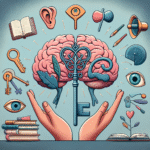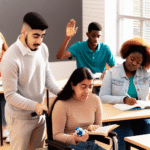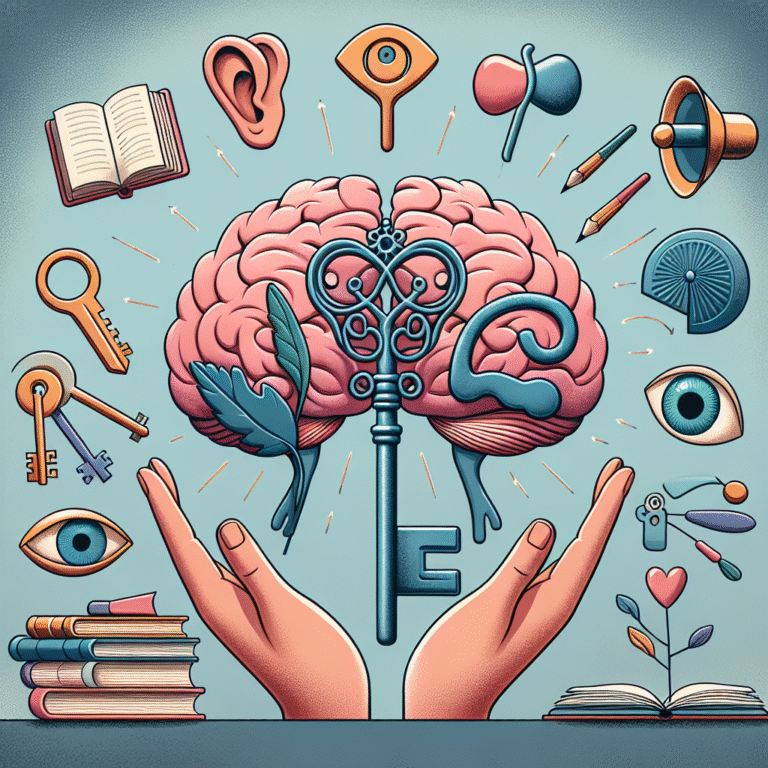
Empowering Minds: Proven Strategies to Boost Self-Esteem for Students with Learning Disabilities
Introduction
In today’s educational landscape, the discourse around self-esteem, especially for students with learning disabilities, is more critical than ever. The phrase "Empowering Minds: Strategies to Boost Self-Esteem for Students with Learning Disabilities" encapsulates a movement that seeks to uplift and affirm the identities of diverse learners. Self-esteem plays a pivotal role in the academic journey of any student, but for those with learning disabilities, it can often be a battleground. In this article, we’ll uncover unique strategies that educators, parents, and peers can leverage to foster self-worth and resilience in these students.
Understanding Self-Esteem in Students with Learning Disabilities
Before diving into actionable strategies, it’s crucial to establish a clear understanding of self-esteem and its specific implications for students with learning disabilities. Self-esteem refers to one’s sense of self-worth and confidence in one’s abilities. For students facing academic challenges due to learning disabilities—such as dyslexia, ADHD, or dyscalculia—this self-worth can frequently waver.
The Impact of Low Self-Esteem
Research consistently shows that low self-esteem is associated with a plethora of negative outcomes, including:
- Increased anxiety and depression
- Lower academic achievement
- Social withdrawal
- Behavior issues
This underscores the importance of implementing Empowering Minds: Strategies to Boost Self-Esteem for Students with Learning Disabilities early and effectively.
The Role of Early Intervention
Case studies show that early identification and targeted interventions can dramatically improve academic performance and self-perception. For instance, a longitudinal study at a school for students with learning disabilities revealed that early involvement in self-esteem workshops resulted in a 30% increase in student self-reports of confidence over three years.
Proven Strategies to Boost Self-Esteem
The following sections will explore actionable strategies, supported by research and case studies, to transform the self-esteem narrative for students with learning disabilities.
1. Celebrating Small Wins
Strategy Overview
One of the simplest yet most effective ways to boost self-esteem is by celebrating small achievements. Acknowledging progress, however minor, fosters a sense of competence.
Case Study: Mia’s Journey
Mia, a fourth grader with dyslexia, struggled with reading fluency. Her teacher, recognizing her effort, established a "Celebration Wall" in the classroom. Each time a student met a reading target, they got a star on the wall. By the end of the semester, Mia had collected ten stars, leading to a remarkable boost in her self-esteem and an unwavering desire to continue improving.
Analysis
The case of Mia illustrates that small victories are crucial stepping stones toward building confidence. By implementing similar recognition systems, educators can create an environment where students feel valued and capable.
2. Effective Communication Skills
Strategy Overview
Fostering open communication about strengths and weaknesses is essential. Students should feel that they can express their feelings without fear of judgment.
Case Study: Jacob’s Expressions
Jacob, a high school student with ADHD, participated in a communication workshop that focused on self-advocacy skills. By learning how to articulate his needs and challenges, Jacob not only improved his academic engagement but also boosted his self-esteem.
Analysis
Jacob’s experience underscores the importance of teaching self-advocacy as part of Empowering Minds: Strategies to Boost Self-Esteem for Students with Learning Disabilities. When students articulate their feelings and needs, they often feel a greater sense of control over their educational experience.
3. Implementing Personalized Learning Plans
Strategy Overview
Personalized learning plans take into account each student’s unique challenges and strengths, tailoring educational experiences to their needs.
Case Study: Emma’s Custom Curriculum
Emma, a student diagnosed with dyscalculia, had a personalized learning plan tailored to her strengths. Her curriculum involved hands-on learning experiences, coupled with digital tools that suited her learning style. As a result, Emma displayed significant improvements in both self-esteem and academic performance.
Analysis
The transformative impact of personalized learning plans highlights how customized educational approaches can empower students, effectively reinforcing their self-worth and capabilities.
4. Encouraging Peer Relationships
Strategy Overview
Social interactions are vital for self-esteem. Encouraging positive peer relationships can create a support network that uplifts students with learning disabilities.
Case Study: The Buddy Program
A local middle school implemented a buddy system that paired students with and without disabilities. This social program allowed students to build friendship and support, significantly improving the self-esteem of those with learning disabilities.
Analysis
The success of the buddy program exemplifies how peer support can provide both emotional safety and a sense of belonging, vital components in the toolkit of Empowering Minds: Strategies to Boost Self-Esteem for Students with Learning Disabilities.
5. Professional Development for Educators
Strategy Overview
Embedding self-esteem boosting strategies starts with teacher training and awareness. Educators need to be equipped with tools to foster an affirming classroom environment.
Case Study: Educator Workshops
A regional initiative provided workshops on self-esteem strategies for teachers of students with learning disabilities. Teachers reported not only increased awareness but also enhanced classroom dynamics, leading to a notable increase in student confidence.
Analysis
These workshops demonstrate the cascading effects of educator training. When teachers are equipped to nurture self-esteem, entire classrooms benefit, creating a culture of positivity and support.
Conclusion
As we reflect on Empowering Minds: Strategies to Boost Self-Esteem for Students with Learning Disabilities, it is clear that fostering a positive self-image in these students is not just beneficial but essential. From celebrating small victories to ensuring personalized learning experiences, each strategy plays a crucial role in reshaping students’ academic and personal journeys.
By integrating these strategies into educational practices, we can foster a generation of resilient learners who embrace their strengths and view their challenges as opportunities for growth. The journey to empowerment begins with awareness, understanding, and a commitment to nurturing self-esteem.
FAQs
1. What are some signs of low self-esteem in students with learning disabilities?
Students may exhibit signs of low confidence, such as reluctance to participate, frequent comparisons to peers, or a negative self-talk. Early identification can help implement positive strategies.
2. How can parents support their child’s self-esteem at home?
Parents can encourage open communication, celebrate achievements, and create a supportive environment where their child feels safe to express their struggles.
3. Are there specific programs designed to help boost self-esteem in students with learning disabilities?
Yes, many schools offer programs focusing on social skills and self-advocacy, while community organizations provide workshops that emphasize self-esteem and confidence-building.
4. What role do peers play in building self-esteem?
Positive peer interactions can provide emotional support and validation, helping students feel accepted and understood, which is crucial in building self-esteem.
5. How can teachers assess their impact on students’ self-esteem?
Teachers can seek regular feedback from students, monitor participation and engagement levels in class, and make adjustments based on the development and responses observed in their classrooms.
In conclusion, the journey to bolster self-esteem among students with learning disabilities is multifaceted yet profoundly rewarding. Through collective efforts, we can create an inclusive learning environment where all students can thrive.






